2008 Dodge Challenger SRT8 Review

There was a time when a muscle car’s only traction control was in your right foot; when the human utricle and saccule were the world’s finest yaw sensors. Sadly, those days are gone forever. Yes, but… Let's get one thing straight. The original Challenger was no muscle car. And when Dodge’s pony car performance met (and lost to) emissions controls and fuel economy, the little demon turned into a compact luxury coupe of questionable Mitsubishi heritage. Fast forward to the frenzied pace of the Barrett-Jackson Pimp-O-Rama and the next logical iteration was obvious: the Challenger is now a true Muscle Car.
Challenger? Just doing my job M'am. Approaching the big beast is a suitably daunting task. The muscle-bound MOPAR hails from the Chrysler LX platform, shot into the limelight by Ralph Gilles and his gangsta-fresh Chrysler 300. While the original Challenger tucked away unnecessary belly fat and sported pencil thin bumpers, the new “LY” platformed Challenger ditches the Hank Aaron School of Muscle, heading straight for Barry Bond’s homerun bustin’ persona. And it works: the Challenger's overtly chunky, hunky proportions still have the requisite long hood and short deck– even if the visual weight below the beltline gives it a staid and static appearance.
But it’s worthy of Mark Rothko’s approval; the rear's squared sheetmetal (finished in our testers HEMI Orange) with black trim, red taillights and singular white backup light are a shot of abstract expressionism in a landscape dominated by Altezza-encrusted bubble butts. Add the chopped roof, power budge hood and a subtle wedge spoiler proudly bearing the SRT8 moniker and it’s done. There’s a new badass in town.
But the boisterous overtones hit the skids with a palate of dark charcoal inside the SRT8’s cabin. Luckily, the interior is decidedly Charger-ish, with enough unique parts and upgraded materials to put the rental car references at bay. To wit: the SRT8’s suede accents and elegantly stitched door trimmings compliment the upgraded seat covers and squish-friendly plastics. The look is right, but the execution is far off the mark of an Accord Coupe. No worries, the bangin’ Kicker Audio and in-dash Navigation sport enough modern technology to advance the muscle car to the current millennia.
What makes the Challenger’s interior truly unique: the old school seating on the rear bench. Folding back cushion notwithstanding, the intimate hindquarters offers space for two adults, albeit cocooning them with a tapered C-pillar and sculptured armrests. It takes us back to a simpler, smaller time when high fructose corn syrup didn’t fill our glasses and mandate an interior’s size and shape.
Not that the Challenger is a trim, toned lightweight. At well over two tons, the two-door Dodge is part buttoned-down autobahn bruiser, part miracle mile cruiser. Broken pavement and choppy roads have no effect on the SRT8’s massive 20” Alcoa forged wheels and conservative spring rates.
You feel its heft in under any cornering load, even if the multi-link suspension keeps the ship sailing a tight course. Roll control is in the house, but there’s no escaping the laws of physics. Thankfully, the days of bias-ply shredding understeer are history, and power on oversteer isn’t far away– with appropriate coaxing. No surprise there, considering the Germanic levels of refinement in its bones, and a big bore HEMI under the bonnet.
All that sounds great. On paper.
First, this is a limited production, hot-blooded American with an aural, tire-shredding (if largely mythical) legend to preserve. Try and keep that in mind when the Challenger’s overzealous mufflers hush the glorious V8 rumble, while you’re waiting for the massive push of 420lb/ft of torque to hit the pavement. Throttle tip-in is muted and the raucous-looking dual exhaust absolutely begs for Magnaflow’s finest cat-back piping.
To say that the Challenger’s disingenuous tuning is a buzz-kill is like saying the undefeated Pats losing the Super Bowl was a bit of a bummer for Bay Staters.
The Challenger SRT8’s strength lies in its highway strut. If one were to find an abandoned stretch of asphalt and wind-out the 425 horsepower HEMI to its limits, you’d discover a touring car that holds its speed like an S-class Benz, with a touch of wind noise from its frameless door glass. And then brings it all down without drama, thanks to a set of fade-free discs wearing glorious four-pot Brembo stoppers.
The premium price, mandatory autobox, limited production (for now) and polarizing styling isn’t the recipe for a mainstream success. Nor is the SRT8’s 13/18 mpg call on premium go juice. And? All those who want one will get one, and not give a damn. Why would they? The Challenger SRT8 is an immensely comfortable, powerful and over-the-top stylish vehicle. This is what Chrysler stood for in the past, yet works surprisingly well with today’s definition of Detroit Iron.
Special thanks to Mr. Tim Beck for the seat time.

More by Sajeev Mehta
Latest Car Reviews
Read moreLatest Product Reviews
Read moreRecent Comments
- El scotto Under NAFTA II or the USMCA basically the US and Canada do all the designing, planning, and high tech work and high skilled work. Mexico does all the medium-skilled work.Your favorite vehicle that has an Assembled in Mexico label may actually cross the border several times. High tech stuff is installed in the US, medium tech stuff gets done in Mexico, then the vehicle goes back across the border for more high tech stuff the back to Mexico for some nuts n bolts stuff.All of the vehicle manufacturers pass parts and vehicles between factories and countries. It's thought out, it's planned, it's coordinated and they all do it.Northern Mexico consists of a few big towns controlled by a few families. Those families already have deals with Texan and American companies that can truck their products back and forth over the border. The Chinese are the last to show up at the party. They're getting the worst land, the worst factories, and the worst employees. All the good stuff and people have been taken care of in the above paragraph.Lastly, the Chinese will have to make their parts in Mexico or the US or Canada. If not, they have to pay tariffs. High tariffs. It's all for one and one for all under the USMCA.Now evil El Scotto is thinking of the fusion of Chinese and Mexican cuisine and some darn good beer.
- FreedMike I care SO deeply!
- ClayT Listing is still up.Price has been updated too.1983 VW Rabbit pickup for sale Updated ad For Sale Message Seller [url=https://www.vwvortex.com/members/633147/] [/url] jellowsubmarine 0.00 star(s) (0.0) 0 reviews [h2]$19,000 USD Check price[/h2][list][*] [url=https://www.ebay.com/sch/i.html?_nkw=1983 VW Rabbit pickup for sale Updated ad] eBay [/url][/*][/list] Ceres, California Apr 4, 2024 (Edited Apr 7, 2024)
- KOKing Unless you're an employee (or even if you are) does anyone care where physically any company is headquartered? Until I saw this story pop up, I'd forgotten that GM used to be in the 'Cadillac Building' until whenever it was they moved into RenCen (and that RenCen wasn't even built for GM). It's not like GM moved to Bermuda or something for a tax shelter (and I dunno maybe they ARE incorporated there legally?)
- Fred It just makes me question GM's management. Do they save rent money? What about the cost of the move? Don't forget they have to change addresses on their forms. New phone numbers? Lost hours?



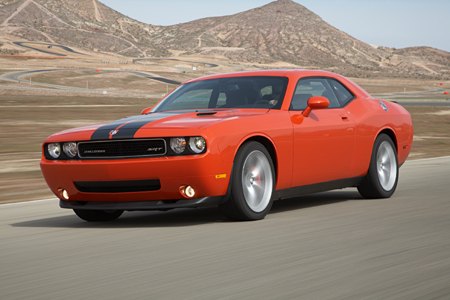


















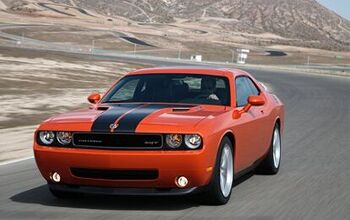
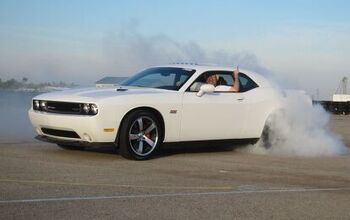
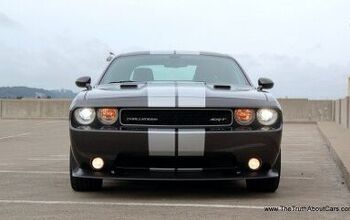
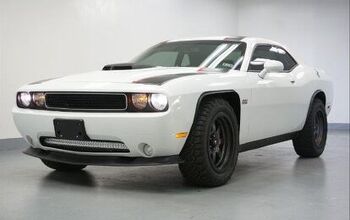




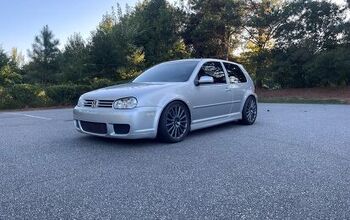






Comments
Join the conversation
I like how Dodge in a sense recaptured the Challenger and the muscle car days and brought it back for the 21st century. Mustang drew first blood as usual and Dodge came with the Charger now the Challenger, and I think the final blow will be the Camaro. It's just to bad that the muscle car age ended around 1970 or 1971. I don't think these new muscle machines are going to hold value like the days of old. Thats when muscle cars were king. I like the fact that they brought some of the style back though, its neat. I would still uch rather have a 1970 Dodge Challenger T/A, a 1969 Chevrolet Yenko Camaro, or a 1970 Shelby Mustang GT-500. Those were the days!
Having just tried out a Challenger R/T with my father, I have to say that this is one nifty set of wheels. At a very reasonable 35K Canadian, you get a lot of goodies - fully loaded with leather, heated seats, auto everything, pretty much everything except NAV (who needs that anyway). We tried the auto version, which is a bit of a buzzkill (albeit a smooth and quick shifting buzzkill), but the manual is available with the 2K trak pak along with an LSD and a lowered rear drive ratio - and I suspect it is very much worth it, because the auto and tall final drive really masks the major power of the 5.7L and forces you to rev it up to get a move on. That's not to say it isn't quick - it's pretty damn fast for a two ton cruiser once you get it into the powerband. It just doesn't have the snappy response and low end grunt you would expect from a modern(ish) V8, at least with the auto. Ride is smooth and planted, not mushy at all with the R/T suspension bits. But you do not forget the massive weight, ever. It's a cruiser, an American GT car, not a lithe sport machine. And if you keep that in mind, it's a damn good deal and a nice comfy ride. The interior is a bit dull but not nearly as gimmicky as the upcoming Camaro, and there is more space in there than a lot of four door midsize cars (complete with a mafia-spec trunk). And I found the exhaust note was, for lack of a better word, delicious. Not too loud but still retaining the classic V8 roar. Dad is seriously considering one, or a Camaro SS if it ever gets made, and despite my aversion to American cars I think this one is a winner and I think I'll have to "borrow" it as much as I can.